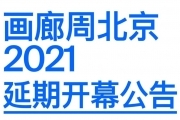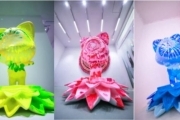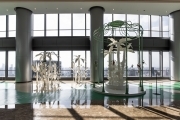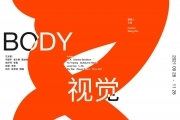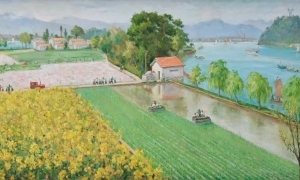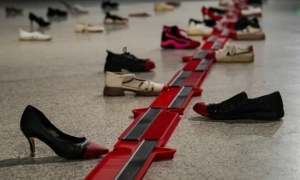新世纪以来,当代中国艺术在全球视野中崛起,几乎成了不争的事实。与欧美一些艺术中心城市和老牌的国际艺术展会相比较,北京、上海等地的中国艺术现场属于新兴国际舞台。但是,就中国艺术而言,欧美展场毕竟是客场,难以充分实现自身价值。中国国内的现场才是主场。
中国作为当代中国艺术的主场,其实先天条件并不优越。上世纪末,当代艺术在中国社会几乎还是一种意识形态屏蔽下的地下艺术。但是,2000年以来,随着当代艺术展览不断冲撞社会公共视野,当代艺术才逐渐获得公开、合法的文化身份。随之而来,居然是当代艺术在中国主场的茁壮成长,以及始于2005年的勃兴和爆炸性增长。
先前,在客场语境中,艺术家对中国身份的自我焦虑几乎变成一种无意识控制,使其创作不得不与外部需求和外部口味作所谓的“国际接轨”。作为国际艺术消费餐桌上的一道文化春卷,当代中国艺术往往跟地缘政治、意识形态和异国情调等等因素密不可分。2005年后,中国艺术又被异化为投资对象、市场泡沫或票房毒药。
Chinese Contemporary Art(缩写为CCA)这个词组在全球的流行就是一个问题,这个词组对应的中文是“中国当代艺术”。但这个CCA的概念,它在国外客场的看法和在中国本地主场的看法有巨大的差别。在国内的语境中,中国当代艺术被认为是一个很正常的词汇。它可以被用来描述、覆盖多种含义。最大的公约数就是描述当代中国的艺术现状。它既可以是当下艺术的总量,又可以是极具现在进行时特征的艺术。它还被用来聚焦一些比较实验、比较前沿的艺术现象。中国当代艺术这个概念虽然有各种解释和定义,但是它在国内认知和解释重复率比较高,而且有一种约定俗成的、互相覆盖的特点。但是在欧洲,或者在美国,人们一用Chinese Contemporary Art一词,马上就特别奇怪地跟那些中国热、艺术泡沫市场、艺术中流行的中国元素有关系。这实际上是跟欧美从1980年代起举办、接受一些中国艺术展览时惯常掺入意识形态和价值观思维有关。那些一水儿红色封面的画册、镶嵌CHINA字样的展览主题,形成了一种针对当代中国艺术的固定视角。许多欧美人甚至只把中国艺术当作反射中国政治现状的一面镜子、或解读中国社会的一把钥匙。说是有色眼镜也好,说是偏见、口味也好,总之CCA成了一种欧美与当代中国价值观外交的产物。CCA这个外在的概念,曾经给中国艺术家的创作和国际交流带来种种围绕中国身份的阵痛和焦虑。近二十年来,在欧美艺术圈的诸多国际艺术现场,中国艺术在跟老外进行客场交流时,CCA有色眼镜往往先入为主,影响所及,中国艺术家容易被想象、被设定,或被动地产生一种曲意迎合、对号入座的心态。
好在,当下中国艺术家的作品正在走出CCA概念的怪圈。中国本土的艺术现场也逐渐被艺术家认同为自身创作、展出、交流、生效的主场。近几年来,艺术家的作品强调个性化,个人意识和语言取代了集体意识和社会性叙事,其视觉元素和表述方式有了诸多新的特点。单看作品,观众已难以判断艺术家的国籍、年龄等身份特征。究其原因,有二:其一,艺术家的中国身份焦虑逐渐淡化和消失。中国艺术家的视野豁然广阔,不但自由讨论全球问题,也会深度切入欧美话题。他们关注和追究的人性问题,更具有普世价值和意义。打中国牌往往成了艺术家不自信、不成熟的表现。其二,艺术家的状态让人没法给他做年龄段的归类和划分。实验、创新不分先后,在许多作品现场,人们看不出艺术家到底是60后、还是70后;更看不出作品对于哪一个年代的集体记忆、意义和使命有一个承担。
从当下艺术创作的表象看,主场的动力一是来自野蛮生长,二是来自体制化惯性,三是来自开放性成长。但究其实质,主场的动力来自一种当代艺术在中国的文化自觉,一种文化主体性的自我建构。
当代中国艺术的主场境遇也不尽理想。艺术家职业化的努力其实是决绝于旧有体制,先于圆明园、后到宋庄“落草”的艺术家们分明是一个个自我雇佣者的生存群落,甚至连自由栖居的权利有时也会被政治权力话语或城市化运动所干预。好在丛林原则和社会达尔文主义的极限磨练,激发了艺术家的求生、甚至求发展的能力。野蛮生长无疑是所有体制外艺术家的生存秘笈。野蛮生长使艺术家历练出不拘一格的本领和一种善于打破各种条条框框的成长经验。
时至今日,野蛮生长成为当代艺术在中国发展的某种硬道理。缺乏官方政策和资本的推动,缺乏主流社会的认同、反馈和滋润,缺乏基金会制度的后援,当代艺术还是在中国大陆几大中心城市极为顽强地存活下来了,并在798等一些创意产业区域兴旺起来。当代艺术还在艺术市场和社会流行文化层面确立了一定的正统地位以及价值标准。海外包抄本土、都市影响外省和乡村,中国艺术家的生存机智和曲线战略,在一定程度上造就了当代艺术的社会神话。山寨式的野蛮生长,是艺术家在中国主场寻找生存空间和精神家园的原始动力。
当代艺术在中国的体制创新和体制更新,其实也是一种体制化惯性。新世纪以来,艺术体制的健全、艺术生态环境的完善早已成为当下中国艺术自我建构的基本方向。体制虽常掺有惰性,却能巩固根基,盘活社会资源,解放艺术生产力。因此,没有主场体制建设的动力,当代艺术就难以构成引领中国社会的主流价值,更难以营造绵绵不断的增长势头。
开放性成长是当代艺术在中国新的国际语境,也是推动主场建设的动力源之一。中国主场无疑也是国际主要艺术现场之一,被赋予、被代表、被希望,便是主场情结在全球化时代的开放社会中不断滋长的必然结果。中国主场的开放既是对国际艺术社会的开放,也是对未来的开放。
从实践角度来看,中国的艺术家虚拟了一个当代艺术的自身界限,即一种文化主体性建构的边界。中国当代艺术要解决的问题非常多。艺术家在个体性层面、空间层面、观看制度层面、方法论层面、价值观层面等等都存在着这样或那样难以回避的问题。中国艺术家试图介入、并解决这些问题的努力,使他们的实验现场成为整个全球当代艺术实践一个重要而不可分割的部分。中国艺术家所面对的前沿问题其实就是全球的问题、就是人性自身的问题。但是,艺术家针对文化主体性建构的虚拟情结,却凸现出一种当代性的追究。即,有没有中国当代艺术自身的元问题?有没有中国当代艺术自身的前沿问题?伴随着诘问和各式回应,中国当代艺术建构自身价值的理性努力,在切切实实的当代性积累中透析、凝聚为一种深具文化自信的主场动力。
这几年,中国艺术家边创作、边讨论,实践的推进和理论的建树互为表里、互为印证。于是,艺术家在诸多艺术现场的讨论形成了一些话语云雾,关于艺术元问题,关于艺术前沿问题,以及两者关系问题等等。中国艺术的主场平台已经有非常多的讨论、非常多的实验、非常多的方案。其中还有许多大型个展、许多小制作、许多持续性的小成本、小规模的群体展览行为。这些艺术现场积累了艺术家相当可观的自我创新经验和话语。在话语云雾的伴随下,中国主场这个新国际平台的活力是不言而喻的。艺术家讨论的问题既有操作、实践层面,又有意识、精神层面,尖锐而又实际。艺术讨论的语境本身就是一种艺术理论的话语准备。充分的理论准备使得艺术家获得一种强劲的精神实验力量。他们在人类已知和未知领域交汇的许许多多临界点上,做出了跨越边界、或拓展边疆的努力。
其实,2009年,在中国本土现场发生了一些被称为具有重量级影响的艺术家个展,如隋建国个展《运动的张力》、顾德新个展《2009-05-02》、孙原+彭禹个展《自由》、MadeIn个展《看见自己的眼睛:中东当代艺术展》,这些展览和许多颇具实验性的群展现场一起,建构了一个非常开阔的实证式语境,预示了当代艺术一个影响国际观瞻的中国现场的出现。
对于方法论的梳理和批判,现在却几乎成了中国前沿艺术家的一种自觉。批判的武器,与对武器的批判,不再是二元对立的结果。艺术家在灵活应用武器时,在思维方式上寻求解放。他们实际上还是想回到艺术问题的“根”上去,寻找中国艺术自身的元问题。诸如国家权力问题、集体无意识问题、法律和道德底线问题、空间权力问题、观看制度问题等等。其中,有些是属于全球艺术的共同问题,有些却仅仅是中国当代艺术自身的问题。而触及艺术自身的元问题,有助于艺术家的理论探底工作,更有助于他们在巩固理论基石后的再次弹跳。中国艺术家通常并不是有意识地去考虑中国当代艺术的元问题,只是在工作当中遇到了一些困惑,在寻求解决方案的时候才会展开一些反思,从而触及这类元问题。因此,艺术家对中国艺术元问题的追究反倒成为学术前沿。毕竟,中国艺术的前沿问题仍然是主体性的建构和自身价值的建设。这是中国主场建设最迫切的工作。对比而言,批发一些欧美时髦、或曾经时髦的文化议题,如奇观、后殖民、帝国等等,用以武装自己,并不有助于主场的自我创新和自我建设。这只是一种错把他乡当故乡的时空错乱而已。
当下,一些中国艺术家积极挑战、解决内心空间羁留的一个个艺术元问题。他们深知艺术元问题也是艺术的核心问题。在艺术家的文化应对策略上,他们不断更新的艺术形式和方法,毕竟跟以前艺术工具论的老手法、老准则拉开了距离。其实,艺术家这种觉醒也许来自身体内部的下意识,也许来自一种思想内部的自省风暴。从艺术元问题出发,他们对既有的艺术行政体制、展览体制、观看制度、乃至策展制度等做出反省,甚至在反省中换跑道出发,打破路径依赖。这构成了现在不少中国艺术家工作的新线索。这些线索有可能在几年后归入美术史的范畴,然而,也有可能只是一种一时而终的思潮和现象。中国艺术家的创作有时呈现较大的跨度、有时呈现对自身积累的背离或超越。但这并不是坏事,这说明他们对于更换跑道的变化已经驾轻就熟。他们觉得不能老是画一个LOGO图式,秀一种形式,追究一种方法,或者表达一种世界观。他们一旦发现哪条线索已然构成线性逻辑惯性,就开始有一点警觉,然后跳开,找到新的可能性。不断跳线、不断跨界之后,一些中国艺术家的现场经验和现场思考甚至超越了当下的知识系统,变得连自己和他人都难以把握、甚至难以定义。在这样一个情形下,艺术家在创作上获得的是一种更加陌生、却又更加自由解放的精神状态。因此,就中国主场而言,如果尊重艺术家追究中国当代艺术元问题的这样一种经验、一种现象,然后再把这种经验、现象放在一个恰当的位置上,当代中国艺术的主体性也许就会浮出真实的海面,而非仅仅沉默在虚拟的边界。CCA的概念也许需要词语的新老更替。CCA完全可以让位给英文的Chineseness,中译为“中国性”这样的一个词汇;或者替换为Chinese Value,即“中国价值”这样的词汇。那么,这些词汇虽具临时性的特征,却有可能把一些欧美语境中的老概念及其附加值替换掉,从而让旧有的CCA概念所形成的精神控制以及艺术家标准化作业式的创作灰飞烟灭。词语更新,有助于中国主场语境的自我廓清,更有助于艺术主场概念的理论筑底。主场根基的培育和巩固,不仅需要触及、解决中国当代艺术的元问题,而且需要刷新价值取向、创造性地构建文化主体性。
伴随中国的大国崛起,国际和国内的当代艺术圈自身也形成了一个名利场社会,艺术权利再分配体系更导致了一个个新的成功学途径。因此,中国的一些艺术元问题的理论追究也有现实层面的针对性。它们不但与中国当代艺术在国际社会的定位、价值取向和权利分配发生关系,而且与当代艺术在中国社会的体制建设、价值观和权力话语发生关系。当下,有些现状并没有改变。比如中国艺术体制和生态建设必须达到一个什么样的程度,才能被欧美接受为具有国际贡献的当代艺术现场?中国当代艺术需不需要这种接受面?这些问题也需要探讨。中国艺术很多层面上的理论问题,实际上是中国当代艺术在国际现实格局中不断发展、博弈而产生的应用对策,是在一个个见招拆招的应急状况下产生的即时方案。理想的理论建设环境并不存在,长线的文化建设蓝图只能被一而再、再而三地修改、更换。因此,在中国艺术家纷繁复杂的艺术实践面前,策展人和批评家要做的首要工作就是及时跟进。在理论跟进之中,艺术家对一些中国艺术元问题的追究才会生效。
还有,中国的当代艺术的定价权实际上也不在中国主场手上。虽然中国有这么大的艺术圈子、这么大的艺术品生产规模,但是当代艺术的价值标准和定价权仍然操控在欧美少数人的手上。也许,只有艺术主场的国际化建设能够强大到主导价值取向、输出价值标准的时候,中国当代艺术才能自己说了算,而且还能影响一大片。主场的动力不仅受制于自身的资源,当然也会回应外在的压力,参与内外力量的循环和平衡。中国主场不是一个精神孤岛,它是国际艺术权力话语此消彼长的一个鲜活的现场和舞台。
主场不仅是中国的主场,也是世界的主场。中国主场的打造,既要拥有主体性构建的价值支撑,又要纳入全球当代文化力量的参与。唯如此,中国大大小小的艺术现场才能成为立足于中国本土的、有中国风骨的国际艺术主场。
主场的真正动力其实是中国的艺术家,是艺术家身上革故鼎新的非凡创造活力。
策展人顾振清
2009年10月12日草场地
The Power Dynamics of the Home Court
By Gu Zhenqing
In the 21st century, the rise of Chinese art at a global scale is a self-evident fact. Compared with the mature American and European art centers and related art fairs, China’s new art scenes, including those in Beijing and Shanghai, are emerging platforms for art. Having said that, China is still the ‘home court’ for its own art, while America and Europe provide only a “visiting field”, which is insufficient for an appreciation of the full scope of Chinese art.
China at the outset, in providing the “home field” for its art, was structurally handicapped. At the end of last century, Chinese contemporary art existed within the underground, diminished by official ideologies. Beginning in 2000, contemporary art exhibitions restlessly challenged these restricting boundaries, entering into public life, and with this contemporary art gradually gained greater legal standing and public cultural identity. It is no surprise that the Chinese art scene has developed as an independent art world, and was subsequently followed by an art boom in 2005.
In the context of being a visitor or guest within the international art community, Chinese artists are inevitably anxious about their Chinese identity. This anxiety develops into an unconscious effort to control, with their artistic creativities shaped into certain stylized languages that met the aesthetic demands from the outside (the so-called “internationalized” process). As a “Cultural Springroll” on the dinner table of the international art party, Chinese contemporary art is always associated with regional politics, ideologies, and exotic experiences. After 2005 more negative notions emerged, such as market-oriented subjects, economic bubbles, and box-office drop-off.
Chinese Contemporary Art (abbreviated as CCA) is the new popular phrase globally. The popularity of the phrase itself is a problem. The outsider’s idea of CCA is significantly different from how Chinese understand the phrase. Within the Chinese art community, CCA is a generic term that covers different situations, but is mostly used to refer to the current in Chinese visual art. It is the general sum of what has been happening in Chinese art, and the ever-changing reality in the art world. It can also refer to some of the more experimental or ‘edgy’ activities in the art world. The specific understanding of CCA can vary from person to person, but a certain consensus has been built around it, and it is widely accepted and used. In European or American however, CCA has very different connotations. For reasons that can be dated back to the 80s, it is usually, and awkwardly, associated with ‘China Hot’, economic bubbles, or some specific Chinese iconographies. At that time Chinese art exhibitions were presented in America and Europe based on a criteria that was filtered by ideologies. Accompanied by red cover catalogues and big ‘CHINA’ signs, the exhibitions from that period are primarily responsible for the stereotypes the west created about CCA. CCA was understood as a mirror of Chinese politics, and the only key to understanding Chinese society. Call it a filter, a cultural bias, or just matter of taste; the understanding of CCA became the product of a diplomatic battle between American and European culture and contemporary Chinese culture. This outsider’s understanding of CCA has bought anxiety and difficulties to Chinese artists as they communicate with international audiences on issues of Chinese identity. When Chinese artists presented their works in exhibitions outside of China, the western ideology of CCA pigeonholed their work as artistic gestures aiming to please or emulate.
Luckily, today Chinese artists are stepping out from the restrictive cycle of western ideas on CCA. China as a home base, both geographically and culturally, has been widely accepted by artists. They use it as a place for inspiration, exhibition, communication, and broad engagement. In recent years, Chinese artists have used their individual visual languages to replace collective awareness and the grand social narrative. In many cases, one cannot identify the artist’s identity including age and nationality. Two reasons likely contribute to this tendency. Firstly, the anxiety over Chinese identity has been reduced and faded-out. Chinese artists have a broader vision, and are interested in commenting freely on global issues and expressing their concerns on American and European issues. They started to seek more universal values and meanings, with a greater focus on humankind as a whole. To play the Chinese card, on the contrary, has become a sign of immaturity and lack of confidence. Secondly, artists cannot be easily categorized by age. Being a particular age doesn’t indicate superiority in experimentation and innovation. In many exhibitions, audiences can hardly tell who is the post 60s age group and who is not. Nor can one tell which artist’s works are emotionally informed by collective memories or social missions.
At the first glance, the engine for the “Home Court” is fueled by the following three sources: firstly, a grassroots-kind of determination; secondly, the regrouping of the existing system; thirdly, a new openness. But at its core, the real source comes from the awareness of contemporary art within Chinese culture. It is an active and constructive cultural rebuilding process.
The Chinese art scene has encountered difficulties; its condition is not even close to the ideal. The attempt to make practicing art a profession is absolutely not possible in the old sponsorship system. Ranging from the Yuan Mingyuan art village to the Songzhuang art village, the hardship of surviving these artists’ residences clearly demonstrates that artists are a self-employed group with few rights over their production and living spaces. Their residences are regularly disrupted by political decisions or urbanization. Thanks to the skill of surviving with the minimum, cultivated by socialist training, the artists’ determination has been more strengthened, and their flexibility has developed into a highly sophisticated art. “To grow independently and wildly as barbarians” became the secrete creed for success; artists now are daring and unrestrained, equipped with the necessary experience for breaking existing rules.
“To grow independently and wildly as barbarians” has become a rule of thumb for the development of Chinese contemporary art. With little support or financing flowing from governmental policies, little recognition, feedback or attention from the mainstream, and with few art foundations in the system, Chinese contemporary art survived from a tenacious effort carried out in some major metropolitan centers in Mainland China. The 798 Art District is a good example. Contemporary art legitimizing itself within the broader art discourse, and established some new value standards for the art market and pop culture. The use of a foreign veneer on indigenous practices and the use of urban influence in the countryside; Chinese artists’ survival skills and flexibility to a certain extend created the legend of contemporary art.
A shoddy way of thriving was the required process in this campaign for the sovereignty of one’s art practice. Chinese artists were desperate in searching for a breathing space and a spiritual homeland. The process of contemporary art generating its own synthetic framework was an act of self-fulfilling inertia. As we enter a new century, the construction of a healthy and sophisticated art ecology has become the goal for the Chinese art world. Although system has its own laziness, it can be helpful when it comes to consolidating the base, activating resources, opening up creativity, and increasing productivity. That is the emphasis needed to the build an ecology based on a “home court” philosophy. Without a sustainable system, contemporary art will not be able to lead as a primary value standard for Chinese society, nor will it maintain its increasing impact.
Our appreciation can grow with an open-minded perspective, contextualizing contemporary art in China within a broader international context, and this one of the motivations for constructing our “home court”. The art scene in Mainland China is undoubtedly engaged with the international art community. To be enriched, to be represented, and to be acknowledged are the goals of the “home court” complex, the very things constantly encouraged in an open, globalized society. As the hosting country, the openness is toward the international art community, as well as to the future.
Chinese artists restrain themselves within an artificial cultural border that arises in the construction of the cultural self. Many problems in Chinese contemporary art remain unresolved; artists are challenged at personal and geographical levels. They have to face the differences in the understanding of methodology, value, and the concept of spectators. Chinese artists’ attempts at engaging with and solving these problems make their creative landscape a crucial part of global contemporary art scene. The most prominent questions for Chinese artists are the questions shared with the rest of global community; they are questions about the human condition. But Chinese artists’ obsession with building a cultural selfness reflects an urgency in defining contemporary. One is left to enquire; is there a primary question in Chinese contemporary art itself? Is there a ‘frontier’ question for Chinese contemporary art? Through this questioning and attempts at answering, a rationalized search for the cultural selfness will accumulate into a solid and confident motivation for our “home court”.
For Chinese artists, the recent years have brought parallel developments in theory, criticism, and studio production. As result, artists’ discussions have formed a new environment around topics such as “the primary question for Chinese contemporary art”, “what are the frontier questions in Chinese contemporary art”, “what is the relationship between these two questions”. Many discussions, experiments, and proposals have occurred in the Chinese art scene, together with many ambitious solos, or small-scaled .small-budget exhibitions. All these art happenings offered a considerable amount of experience and discourse. This new climate bought the Chinese art scene, a newly formed player in the international art scene, a new blast of energy.
The context for art discussion is a preparation for art discourse. A developed theoretical knowledge helps artists gain a powerful intellectual force. Artists are those who make contributions to exploring and expanding the boundaries between the known and unknown.
In 2009 there have been some exemplary exhibitions presented within the art scene in mainland China including “Motion/Tension” by Sui Jianguo, “2009-05-02” by Gu Deixin, “Freedom” by Sun Yuan and Peng Yu, and “Seeing One's Own Eyes -- Middle East Contemporary Art Exhibition” by MadeIn. These exhibitions, together with many other experimental shows, created broader evidence and discourse, and indicated the emergence of a Chinese “home court” on the global map of contemporary art.
To criticize and systemize methodology has become a self-aware act for the most frontier of Chinese artists. The methodology of criticism and the criticism of methodology are no longer counterparts. While developing their own agile methodologies, artists are looking for open creation, freedom from existing ways of thinking. In fact, they want to return to the base art questions, the primary art question for Chinese art. We have many current issues in front of us including governmental power, collective unconsciousness, the fundamentals of law and ethics, the authorship of space, and the different concepts of the role of spectator. Some of these issues are shared concerns with the global community, while some remains particular to the Chinese art world. To ponder the primary questions in art could help artists in exploring different strata of art theory, offering a possible breakthrough after establishing a solid base. Chinese artists usually don’t from the outset initiate investigative approaches into primary art questions, instead they only start to reflect on this after encountering difficulties in the process of finding solutions. So the primary art question becomes the frontier question. The frontier question is the construction of cultural selfness and a self-referenced value system. To recycle cultural terms such as spectacle, post-colonialism, and empire, and use those former popular terminologies to equip oneself provides no help in building our “home court”. It is an anachronistic illusion using other people’s homeland as our own homeland.
There are some Chinese artists actively investigating this primary question in art. They understand this primary art question is the essential question. In terms of a strategy for responding culturally, their artistic approaches broke away from the old concept that took art expression as the medium. This awakening might come raise from unconscious, or might come from a stormy self-reflective process. Using the primary question in art as the starting point, these artists reflect on art managing systems, exhibiting systems, spectator systems, and even curating systems. Some of them changed their paths. This process provided some clues or models for many Chinese artists. These clues might be understood by art historians as impulsive movements or art phenomenon. But having ambitious coverage of subject or medium, or even to betray and surpass one’s own heritage or experience is not a bad thing at all. This action of breaking away shows that these artists are getting comfortable in changing their strategies, and exploring new artistic approaches. They chose to not paint only one logo, show one perspective, offer one way of presenting, or formulating one kind of worldview. They are alert to signs of lineal thinking, and react by jumping out from the circle to find new possibilities. After constant challenges from different boundaries, Chinese contemporary art and the discussions around it have gone beyond our knowledge. It has started to become something unaccountable, indefinable, and uncontrollable for the artists and the others. As result, artists gain a refreshing unfamiliarity and a more liberated spirit from their artistic creation. If curators from our “home court” could continue to examine the primary art question in the contemporary scene, and at the same time position it in an appropriate context, the cultural selfness of contemporary Chinese art will slowly and powerfully emerge from the edge of a delusional world. It will break out from the silence and become a fully formed reality. Possibly CCA needs to be replaced by ‘Chineseness’, or ‘Chinese Value’. Although these two replacements might sound temporary, they would be sufficient to replace the old concepts (and their side effects) about China in American and European discourse. This change in phrasing will free artists from past restrictions and standard machine-like producing. It will also help clarify china identification as the host of her own discourse in the “home court”. The nurturing and protection of the “home court” requires challenging and solving the primary question in Chinese contemporary art. It also requires a redefined value system, and building the cultural selfness constructively.
Along with the rise of China in general, the contemporary art world has become a place of money and frame. The regrouping of power gave birth to a new profession in how to be successful instantly. So this pursuit of the primary question in art has its social meaning in reality. It is closely related to the positioning of Chinese contemporary art in the international art scene, the value system, and the regrouping of power. At the same time, it has to do with Chinese art systems and discourse. Some questions still remain, for example, “how mature and developed is our art policy, and is it developed enough for American and European standards to be considered as contributing to the international contemporary art scene?” “Does the Chinese contemporary art community need to set this international standard as our standard?” Chinese art has many challenges in its art theory development. The Chinese contemporary art situation we have now is a practical and instant reaction to the process of negotiating with international players. This is not an ideal environment for developing theories. The long-term cultural plan was forced to be revised again and again. In a complex situation such as this, the curator’s and art critic’s primary task is to be spontaneous. Only through the process of following up with considered art theories can the artists’ pursuit of the primary art question will be effective.
Our “home court” doesn’t have the authority in pricing. Regardless how big our art world is, and how massive the art production is, the value standard and pricing system is still controlled by a small group of people from American and Europe. It is only when Chinese art scene grows strong and international enough that we can establish our own value standard. That will establish the time when we can define the discourse, and also extend our influence widely and meaningfully. Our engine will be restrained by its own limits in resources in responding to the outside pressure, and participating in the circulation and balance of exchanges. Chinese “home court” is not an isolated island; instead, it is live dancing stage for international dialogue. It is an interactive platform for power dynamics.
The “home court” is not a Chinese “home court”, it is also the “home court” of the world. In building our “home court”, we need not only the support from the cultural selfness, but also contemporary culture from all over the world. That is the only way that China’s various art scenes can all be elevated into an international field that is still rooted in there own culture.
The ultimate engine of the “home court” is Chinese artists, and the exceptional creativities imbedded in their spirit.
【编辑:霍春常】




